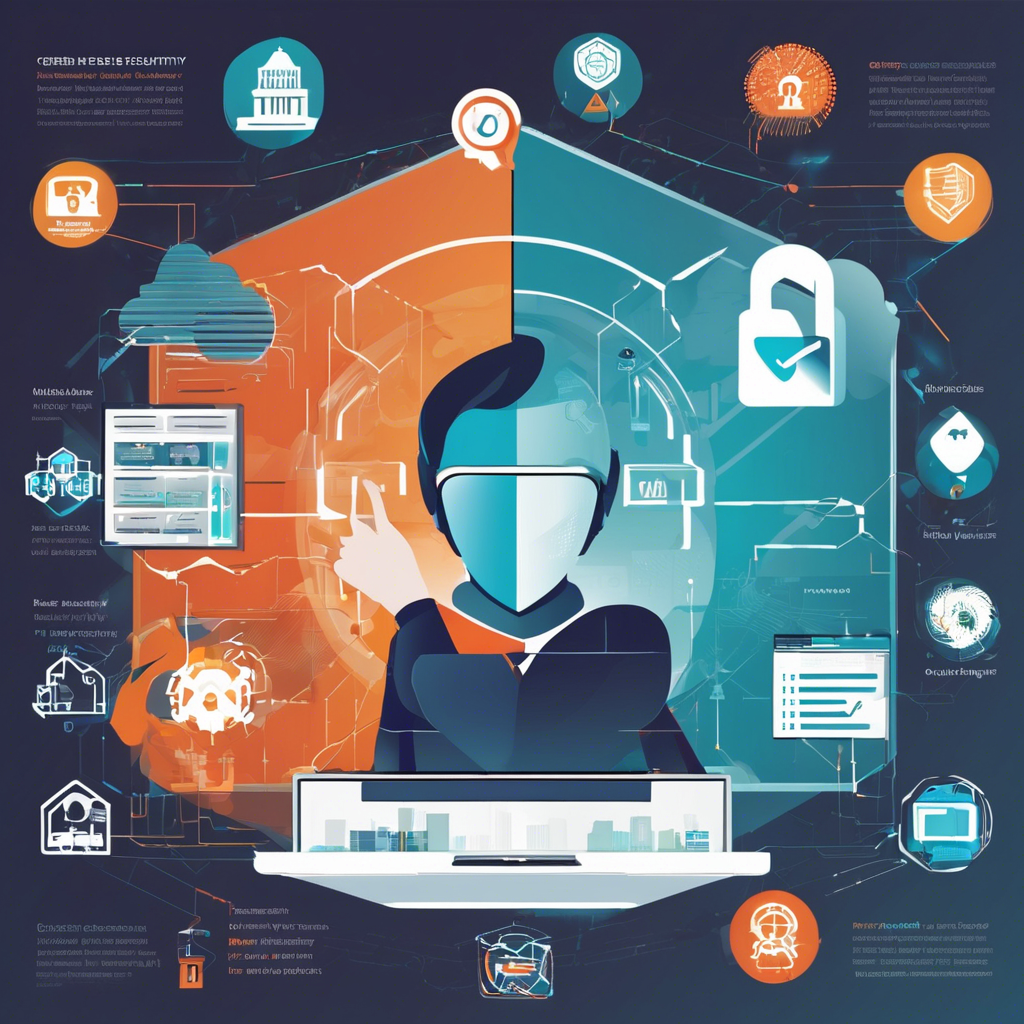Cybersecurity is a critical concern in today’s digital world. With the rise of cyber threats, businesses and individuals must take proactive measures to protect sensitive data and systems. Cybersecurity can be divided into five main types, each addressing specific areas of protection against cyberattacks. Understanding these types can help organizations and individuals build a strong defense against potential threats.
1. Network Security
Network security focuses on protecting computer networks from unauthorized access, cyberattacks, and disruptions. Hackers often target networks to steal sensitive data, install malware, or launch large-scale cyberattacks. To safeguard networks, organizations implement a variety of security measures, including:
- Firewalls – Act as barriers between trusted internal networks and untrusted external sources, filtering out harmful traffic.
- Intrusion Detection and Prevention Systems (IDPS) – Monitor network traffic for suspicious activity and take action to prevent attacks.
- Virtual Private Networks (VPNs) – Encrypt data transmitted over the internet to protect it from hackers.
- Access Control – Restricts who can access certain parts of a network, reducing the risk of internal threats.
With businesses increasingly relying on cloud computing and remote work, network security remains a top priority to prevent data breaches and unauthorized access.
2. Information Security
Information security, also known as InfoSec, focuses on protecting data from unauthorized access, theft, or corruption. This includes data stored on computers, servers, and cloud platforms. Effective information security strategies involve:
- Encryption – Converts data into unreadable code to prevent unauthorized access.
- Data Masking – Hides sensitive information by replacing it with fake data.
- Access Controls – Ensures only authorized users can access specific data.
- Data Loss Prevention (DLP) – Uses software to prevent the accidental or intentional sharing of sensitive data.
Organizations handling large volumes of customer data, such as financial institutions and healthcare providers, rely on strong information security measures to prevent data breaches and maintain customer trust.
3. Application Security
Application security focuses on protecting software and applications from cyber threats. Hackers often exploit vulnerabilities in applications to gain unauthorized access to sensitive data or take control of systems. Key components of application security include:
- Secure Coding Practices – Ensuring developers write secure code that minimizes vulnerabilities.
- Regular Security Testing – Conducting penetration testing and vulnerability assessments to identify and fix weaknesses.
- Web Application Firewalls (WAFs) – Protecting web applications from common threats like SQL injection and cross-site scripting (XSS).
- Software Updates and Patch Management – Keeping applications up to date to fix security vulnerabilities.
With the increasing use of mobile apps and cloud-based software, application security is more critical than ever. Companies that fail to implement strong application security measures risk cyberattacks that could compromise user data and damage their reputation.
4. Cloud Security
As more businesses migrate to cloud computing, cloud security has become a significant focus in cybersecurity. Cloud security involves protecting data, applications, and services hosted on cloud platforms. Major cloud security measures include:
- Data Encryption – Protecting cloud-stored data with encryption to prevent unauthorized access.
- Identity and Access Management (IAM) – Ensuring only authorized users can access cloud services.
- Cloud Security Posture Management (CSPM) – Monitoring cloud environments for misconfigurations and vulnerabilities.
- Multi-Factor Authentication (MFA) – Adding extra layers of security to prevent unauthorized access.
Cloud security is essential for businesses using cloud services like Amazon Web Services (AWS), Google Cloud, and Microsoft Azure. Without proper security, organizations risk data breaches, compliance violations, and financial losses.
5. Critical Infrastructure Security
Critical infrastructure security focuses on protecting essential systems that support modern society, such as power grids, water supply systems, transportation networks, and communication services. Cyberattacks on critical infrastructure can cause widespread disruptions and even pose national security threats. Key elements of critical infrastructure security include:
- Industrial Control System (ICS) Security – Protecting systems that control industrial processes, such as power plants and manufacturing facilities.
- Supervisory Control and Data Acquisition (SCADA) Security – Securing systems used to manage infrastructure operations.
- Risk Management Frameworks – Implementing security policies and frameworks, such as the NIST Cybersecurity Framework, to safeguard infrastructure.
- Incident Response Plans – Preparing for potential cyberattacks with detailed plans for responding to threats.
Governments and organizations managing critical infrastructure must implement robust cybersecurity measures to prevent cyberattacks that could have catastrophic consequences.
Conclusion
Cybersecurity is an evolving field that requires continuous attention to emerging threats and vulnerabilities. The five main types of cybersecurity—network security, information security, application security, cloud security, and critical infrastructure security—play a crucial role in protecting individuals and organizations from cyber threats.
As cybercriminals become more sophisticated, adopting a multi-layered security approach is essential. Businesses and individuals must invest in cybersecurity tools, follow best practices, and stay informed about the latest threats to keep their data and systems secure. By understanding and implementing strong cybersecurity measures, we can reduce the risks associated with cyberattacks and create a safer digital environment for everyone.

